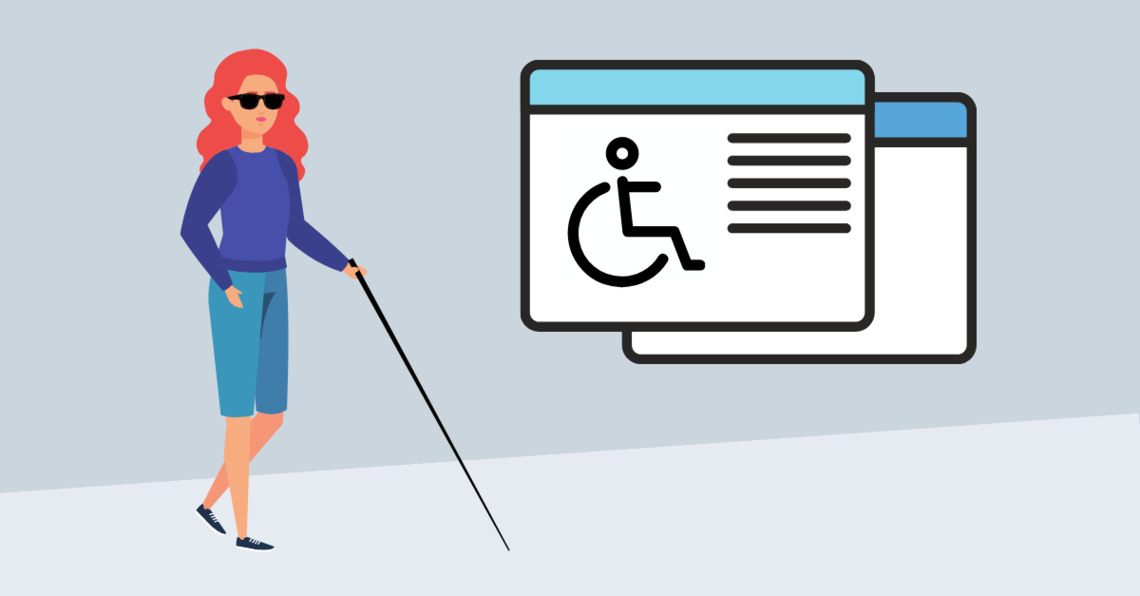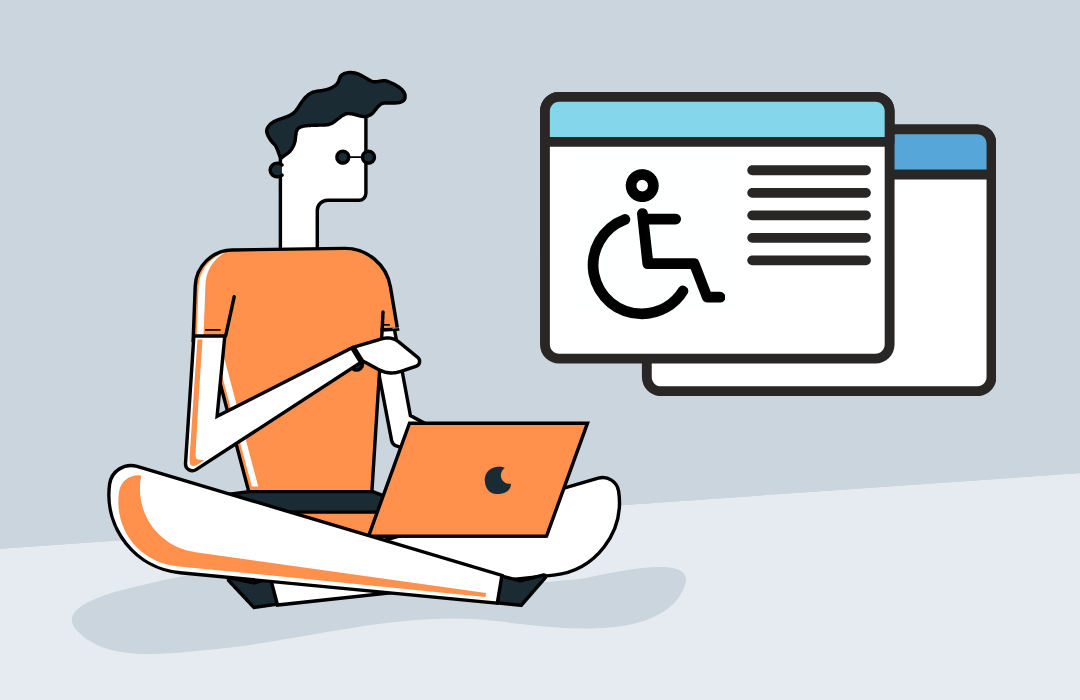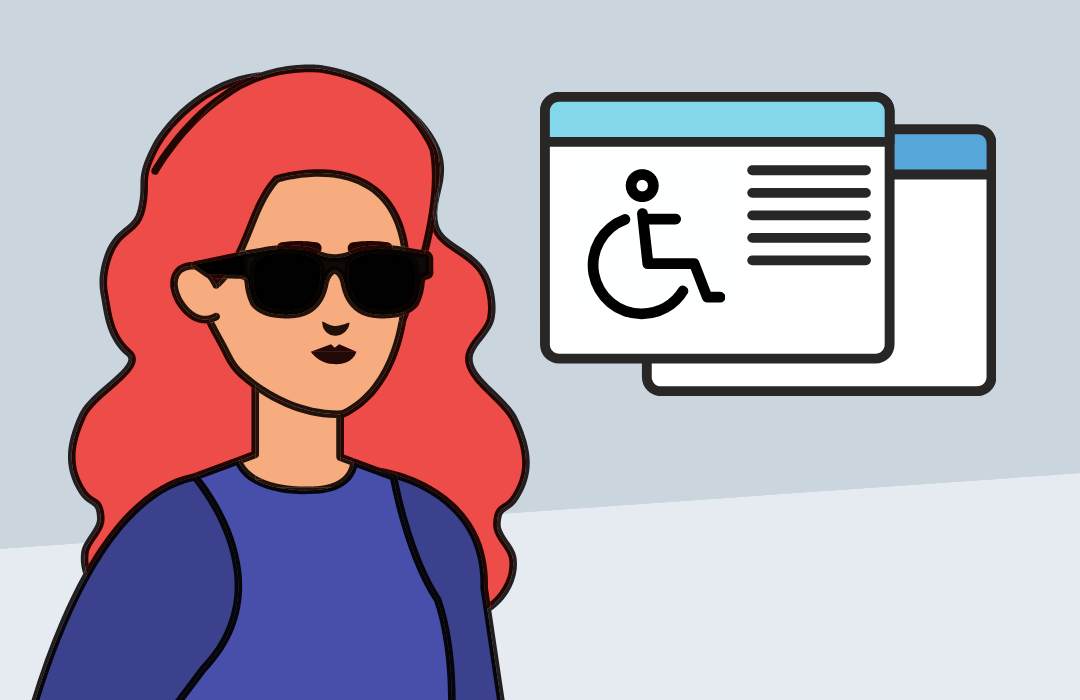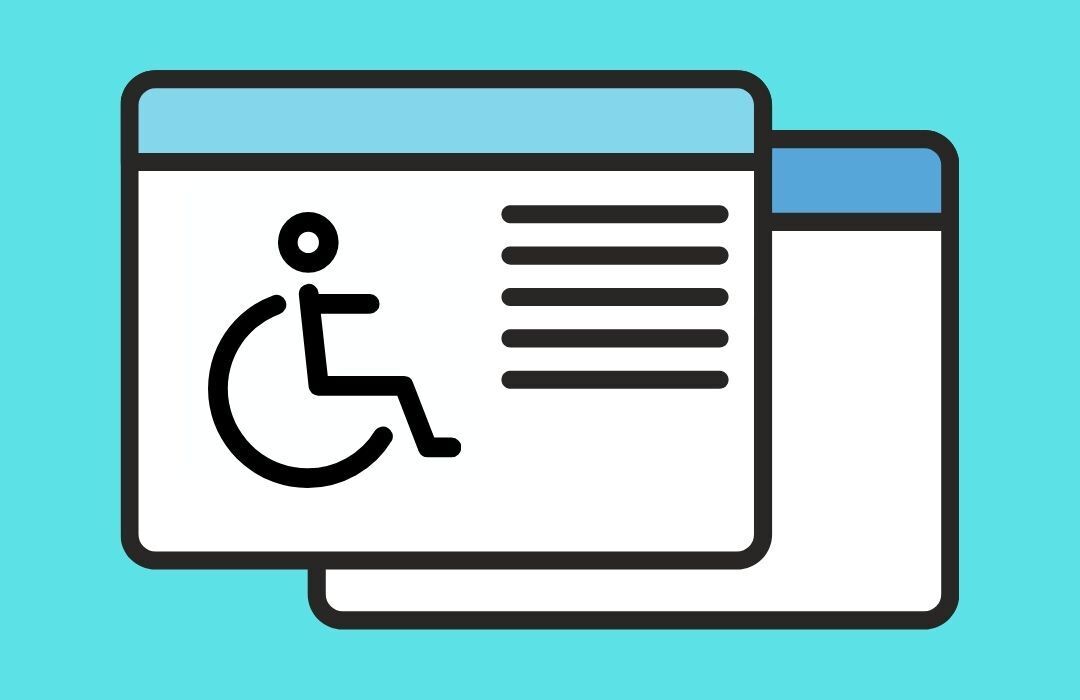Blog
Meeting ADA Standards to Improve Internet Accessibility: Good for the World (and Good for Business)
All businesses should take the necessary steps to ensure that everyone can access and navigate their websites and applications with ease.

All businesses should take the necessary steps to ensure that everyone can access and navigate their websites and applications with ease.


January 13th, 2022
All businesses should take the necessary steps to ensure that everyone can access and navigate their websites and applications with ease.
According to the CDC, 61 million adults in the United States live with some form of disability; that’s about 26% of the adult population, or one in four people! The American Disabilities Act (ADA) was created to address the needs of those requiring assistive technologies to comfortably navigate websites and applications. It’s important that people with disabilities have access to everything that someone without disabilities does, whether in the digital or physical world.
You may have heard of ADA compliance in relation to websites, but they also outline requirements for public spaces to offer ramp access, brail on subways, and other accessible features. Businesses are required to make public accommodations available and accessible, websites are similar in that they too are public spaces.
Imagine trying to go up the stairs to your local museum in a wheelchair. If there’s no ramp or elevator access somewhere in the building, you won't be able to enter the museum and explore all the exhibits and events. You might feel frustrated and excluded from an experience that’s accessible to other people. The same idea applies to navigating a website with a poor accessibility rating.

On the internet, ADA compliance is necessary for people with disabilities and impairments to make use of things like screen readers and high contrast (though becoming ADA compliant can be much more complex than that). We have seen it enforced recently against popular websites, often resulting in lawsuits from consumers. With so much at stake, it’s important that we address ADA compliance in our web designs for our clients for three reasons:
The client has been cited or exposed to a lawsuit regarding non-compliance with ADA
The client is a large business that needs to be fully compliant
The client is socially conscious and cares about people with disabilities
While businesses are increasingly recognizing the importance of ADA compliance, there are still many challenges facing companies trying to achieve this goal. Non-compliance with ADA requirements usually starts at the website's creation and is perpetuated due to a lack of resources. More specifically, the developers, designers, and project managers are not trained on ADA best practices or are unaware of the requirements they must meet to build an ADA-compliant website. As a result, accessibility does not get added to the scope of agency projects.
Furthermore, it can be costly and require special changes to technology, including new designs or code solutions. At the same time, many content platforms and coding frameworks do not account for ADA out of the box. Additionally, some companies do not have the capabilities to evaluate ADA compliance internally. This leads to the typical website challenges of:
Keyboard based access - using a keyboard to navigate through web UI
Labeling of images with Alternative Text for screen readers
Optimizing for high contrast, color blindness
Transcriptions of videos

As the need for websites that meet ADA compliance increases, the Word Wide Web Consortium (W3C) has established international standards that make the internet more accessible to people with disabilities. Recently, there was an addition to their compliance rule set, the W3C spec for Accessible Rich Internet Applications (WAI-ARIA) 1.1. The primary purpose of this rule is, "Accessibility of web content requires semantic information about widgets, structures, and behaviors, in order to allow assistive technologies to convey appropriate information to persons with disabilities."
The solution for accessibility challenges is to assess the problem we've described so far through scanners and services that run heuristics on a site to look for adaptability between mobile versions of sites versus their desktop counterparts. Then we look for a holistic solution and includes navigation, page content, compliance scanners, and web app interactions.
When looking to meet WAI-ARIA rules, we evaluate many factors. These include:
Keyboard access
Images
Text alternatives
JavaScript
Time-based media constraints
Pause sliders
Adaptability
Responsiveness.
These items are typically not compliant because modern HTML and CSS often use JavaScript interactions that do not account for compliance. With JavaScript, content gets generated via code, not just HTML, a structured markup language with standards. In addition, mobile devices often use different strategies for content and navigation than desktop sites, where accessibility standards get frequently overlooked.
To combat these issues our development team adds essential features to our clients’ websites, such as alt text, features to display transcription, and high contrast mode. In some cases, we also rewrite frontend JavaScript code with compliant HTML. This process includes replacing menus and creating meaningful connections between interactions with Aria-label to ensure our clients are compliant with the ADA. This ADA focus includes ecommerce web design too.
As a holistic approach, this updates website performance, response time, usability, increases sales, and customer experience, in addition to replacing copy, images, HTML/CSS, and more.

After ensuring everything is up to the compliance standards outlined by the ADA, we will help maintain website compliance by planning regular checks and updates to latest compliance in the future and assessing website performance, including page load, usability, and more with an ongoing roadmap.
We believe that all businesses should, in the spirit of fairness and equity, take the necessary steps to ensure that everyone can access and navigate their websites and applications with ease. While we still have a long way to go, more and more businesses are making strides towards becoming ADA compliant.
If you’re wondering how you can ensure your website is ADA compliant, don’t hesitate to reach out to our team who has expertise in ADA standards for web accessibility.